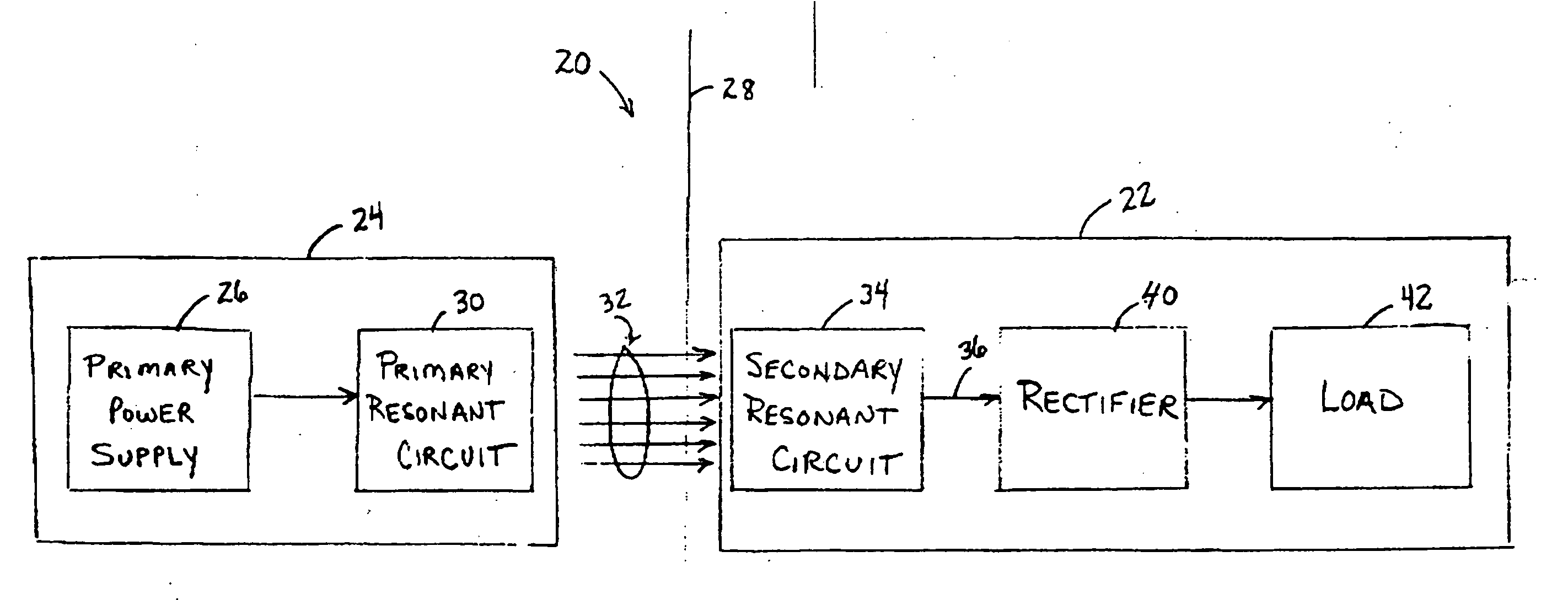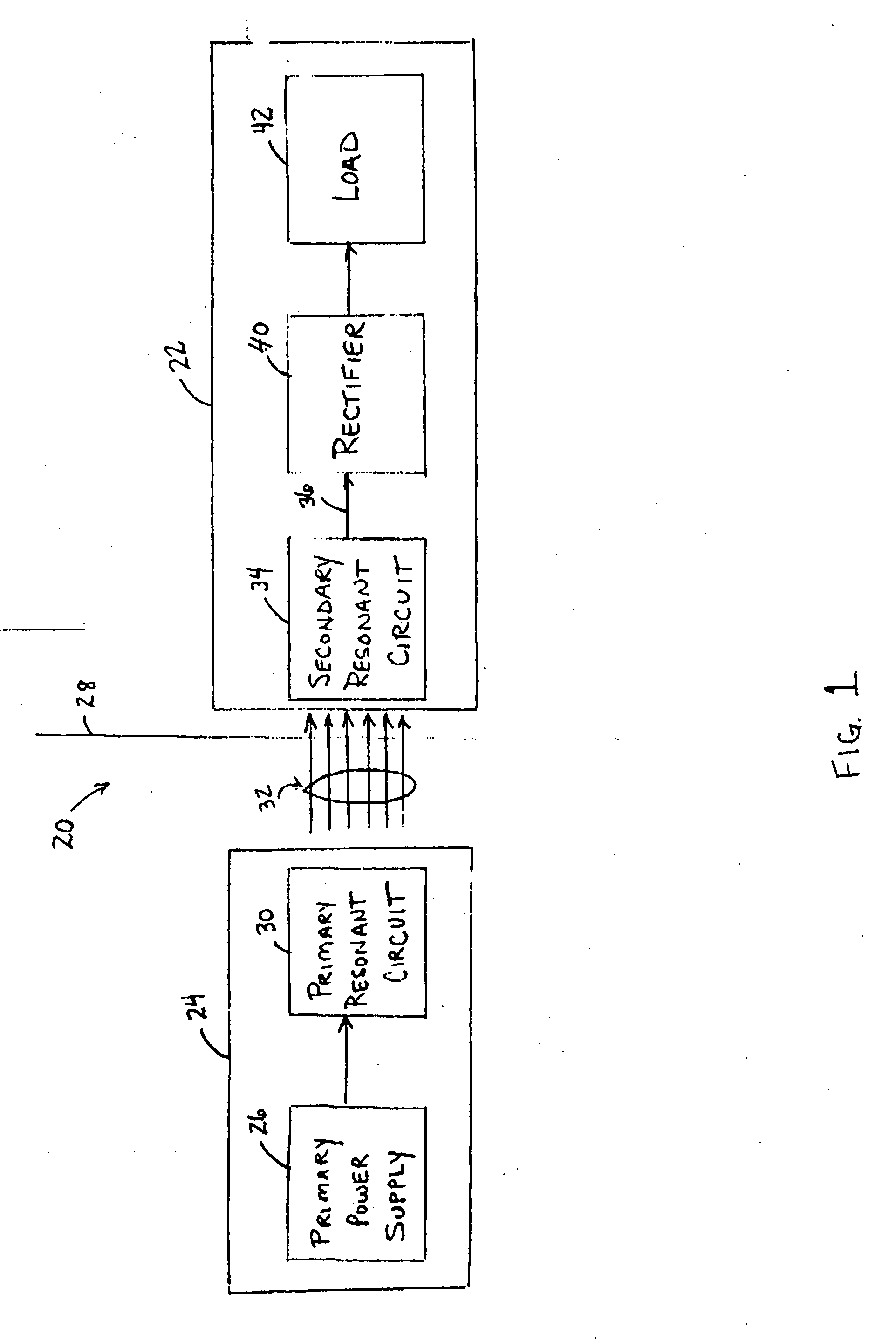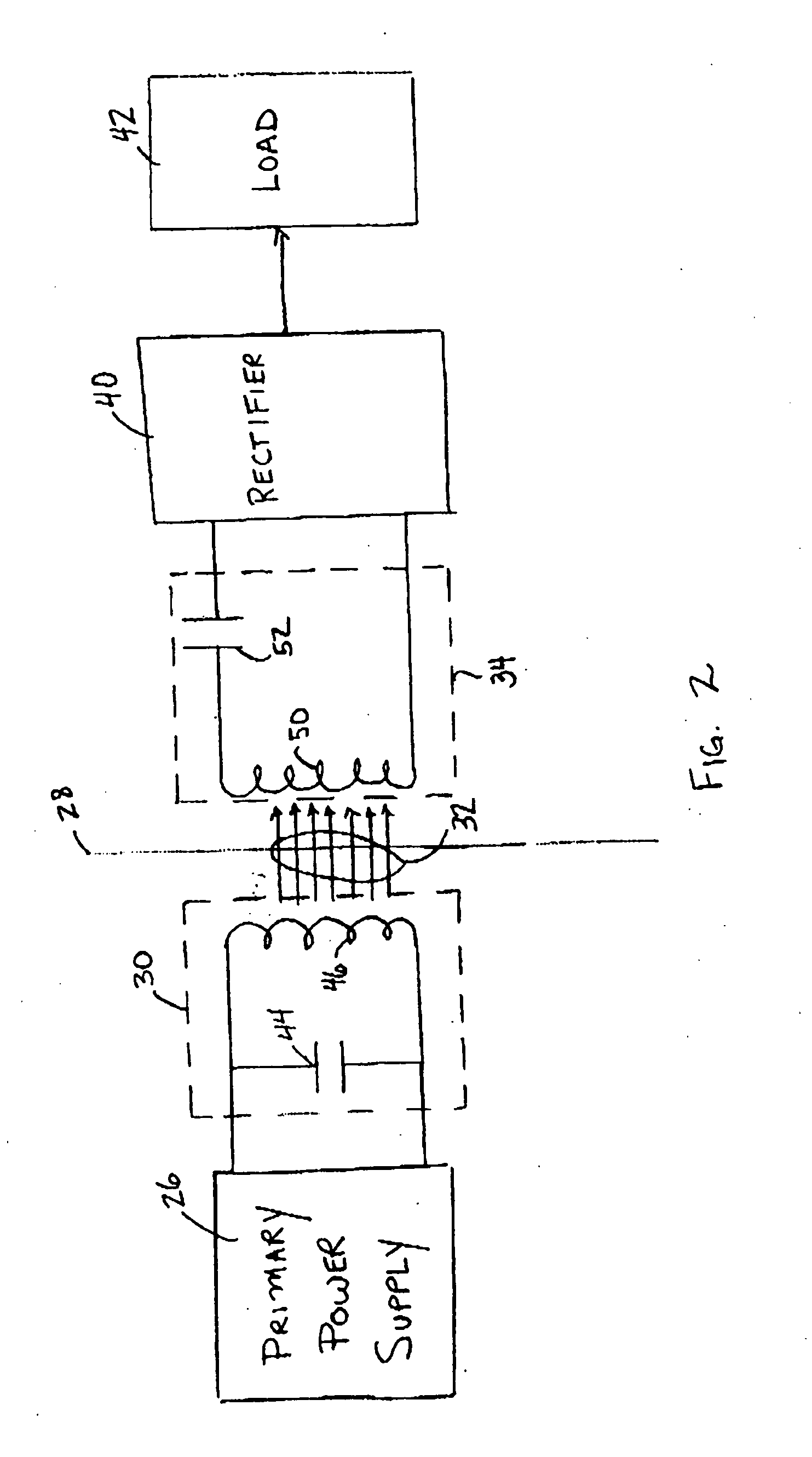Low frequency transcutaneous energy transfer to implanted medical device
a low-frequency, medical device technology, applied in the field of medical implantable devices, can solve the problems of inability to function at all, device performance erratically or not at all, and inability to achieve any effect on the output power supplied to the implanted device, so as to avoid heating, avoid excessive power loss, and penetrate the physical boundary efficiently.
- Summary
- Abstract
- Description
- Claims
- Application Information
AI Technical Summary
Benefits of technology
Problems solved by technology
Method used
Image
Examples
Embodiment Construction
[0024] Referring now to the drawings in detail, wherein like numerals indicate the same elements throughout the views, FIG. 1 depicts the relationship between a transcutaneous energy transfer (TET) system 20 for an implant device 22 in accordance with the present invention. As shown in FIG. 1, TET system 20 includes a primary circuit 24 comprising a power supply 26 located external to a physical boundary 28. Boundary 28 may be the skin of a human or animal body, such as in the case of a medical implant, or may be any other type of inanimate material or tissue depending upon the particular application of TET system 20. Primary circuit 24 also includes a primary resonant circuit 30 that is electrically coupled to power supply 26 to resonate at a designated power signal frequency. An alternating magnetic field 32 is generated in primary coil 30 in response to an electrical signal provided by power supply 26.
[0025] TET system 20 also includes a secondary resonant circuit 34 in a spaced...
PUM
 Login to View More
Login to View More Abstract
Description
Claims
Application Information
 Login to View More
Login to View More - R&D
- Intellectual Property
- Life Sciences
- Materials
- Tech Scout
- Unparalleled Data Quality
- Higher Quality Content
- 60% Fewer Hallucinations
Browse by: Latest US Patents, China's latest patents, Technical Efficacy Thesaurus, Application Domain, Technology Topic, Popular Technical Reports.
© 2025 PatSnap. All rights reserved.Legal|Privacy policy|Modern Slavery Act Transparency Statement|Sitemap|About US| Contact US: help@patsnap.com



